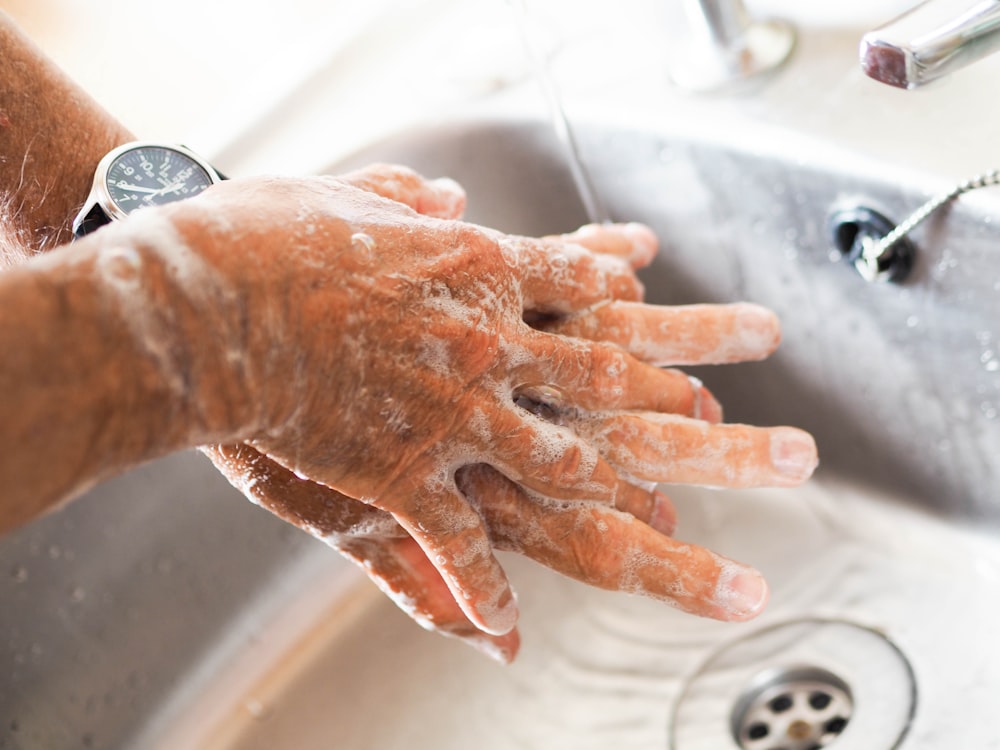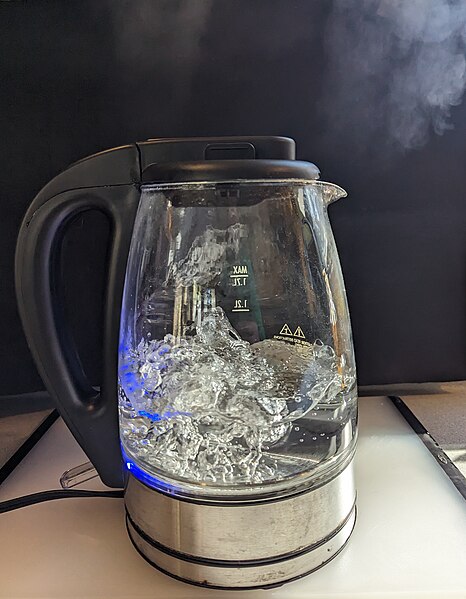Hard Water
- Depending on which part of the country you live in, you will have hard or soft water
- Hard water contains dissolved calcium (Ca2+) and magnesium (Mg2+) ions
- These dissolve in the water when it has come into contact with rocks such as limestone that contain calcium compounds
- E.g when rainwater flows over rocks on its way to a resevoir
- Soft water has only low concentrations of these ions
- The difference between these two types of water can be observed via their reaction with soap:
- Soft water forms a lather much more easily than hard water
- The minerals in hard water react with soap to form scum making it harder to form a lather
Image by Sean Horsburgh on Unsplash
Soft water forms a lather more easily than hard water
- The relative amount of hardness in different water samples can be determined by:
- Measuring the volume of soap solution required to produce a given lather
OR
By measuring the lather produced by a given volume of soap solution
- Measuring the volume of soap solution required to produce a given lather
- Details of this investigation can be located in 'Determining hardness in water'
Exam Tip
Exam questions will ask you to compare water samples for hardness levels.
Remember: The more soap needed to form a lather, the harder the water.



